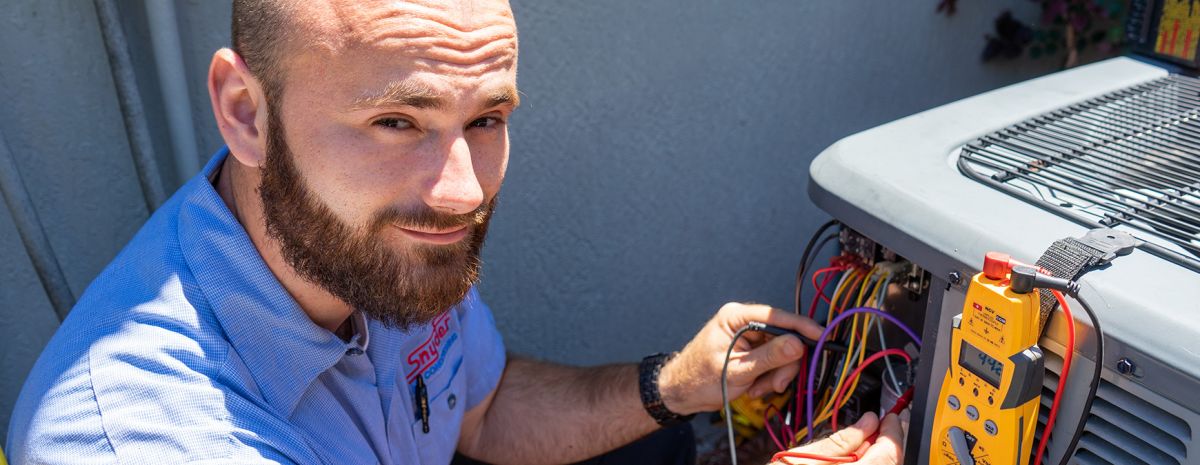TWS is a Great Training Option for Everyone
Learn more about how we can prepare you to advance your career.
Are you interested in becoming an HVAC technician?
If you answered yes, there are technical readings you must become familiar with: superheat and subcooling.
As an HVAC technician, you must learn how to calculate the measurements of superheat and subcooling.
One way to learn: attending an HVAC program at a trade school. During this program, you will also learn how to properly handle HVAC refrigerant safely.
Have You Considered a Career in the Skilled Trades?
Fill out the form to recieve a no obligation info packet.
What is the Purpose of Superheat?
Superheat is important in HVAC because it ensures that the liquid refrigerant, like Freon, is boiled off before it leaves the evaporator and heads to the compressor. Even small amounts of liquid can cause detrimental damage to an HVAC system compressor.
How is Superheat Measured in HVAC?
To calculate superheat and subcooling measurements, a specific Mathematical chart is used.
Superheat is measured by the compressor suction pressure. With the pressure measurement, you can follow the chart to see the corresponding saturation temperature.
If you would like to manually calculate the measurement of superheat, the formula is:
Superheat = Current Temperature – Boiling Point
Superheat is measured by its temperature above its boiling point. If a refrigerant vapor boiling point is 140 degrees, for example, then anything about that pressure would be too high for that specific refrigerant.
To calculate the measurement of subcooling, the formula is:
Subcooling = Boiling Point – Current Temperature
To measure subcooling, you will need a temperature probe and gauge. It is best to take measurements near the condenser coil of the liquid line. Make sure to use the manufacturer’s reading as the guide.
What Happens if Superheat is Too High?
When the technical reading is too high, it means that the refrigerant is not sufficient, making the HVAC system inefficient.
Too high of a superheat can cause the heat of compression to increase, causing the temperature at the discharge valve to increase. If the temperature increases too much, it will cause damage to the compressor.
What Happens if Superheat is Too Low?
When the technical reading is too low, it indicates that the refrigerant did not pick up enough heat in the evaporator to completely boil into a vapor. Liquid refrigerant can cause slugging, which can damage the compressor valves and internal mechanical components.
What is the Difference Between Subcooling and Superheat?
These two HVAC refrigerant technical readings are the extremes that you should consider when handling refrigerant vapor. Superheat occurs when the heat vapors are above its boiling point. Supercooling occurs when vapors are below the temperature at which it turns into a liquid.
Superheat occurs in the evaporator to protect the compressor, and subcooling occurs in the condenser to protect the expansion device.
Supercooling can occur when underfeeding, overcharging, and while using a restricted meter device or faulty head pressure control.
What are the Benefits of Superheat and Subcooling Measurements?
Superheat and subcooling measurements help determine the performance and efficiency of an HVAC system. As an HVAC technician, you will check these measurements during regular maintenance of an HVAC system.
What are the benefits of routine maintenance and measurement checking? Let’s explore.
Improved Efficiency
Understanding the readings helps to manage an HVAC system efficiently. Inefficiency can result in low refrigerant levels, causing sub-optimal HVAC heating and cooling. Although it is difficult to reach perfection, it is always better to improve the efficiency of an HVAC system.
Quick Diagnostics
As an HVAC technician, it will be easier to repair an HVAC system using these measurements. They will tell you right away what is going on in the compressor and what in the HVAC system needs to be fixed.
HVAC Classes
Interested in learning more about becoming a HVAC technician? Read about what an HVAC technician does on a daily basis. If you are ready to learn more about superheat and subcooling, contact Tulsa Welding School to gain additional information about our HVAC program offering. Contact us today.







